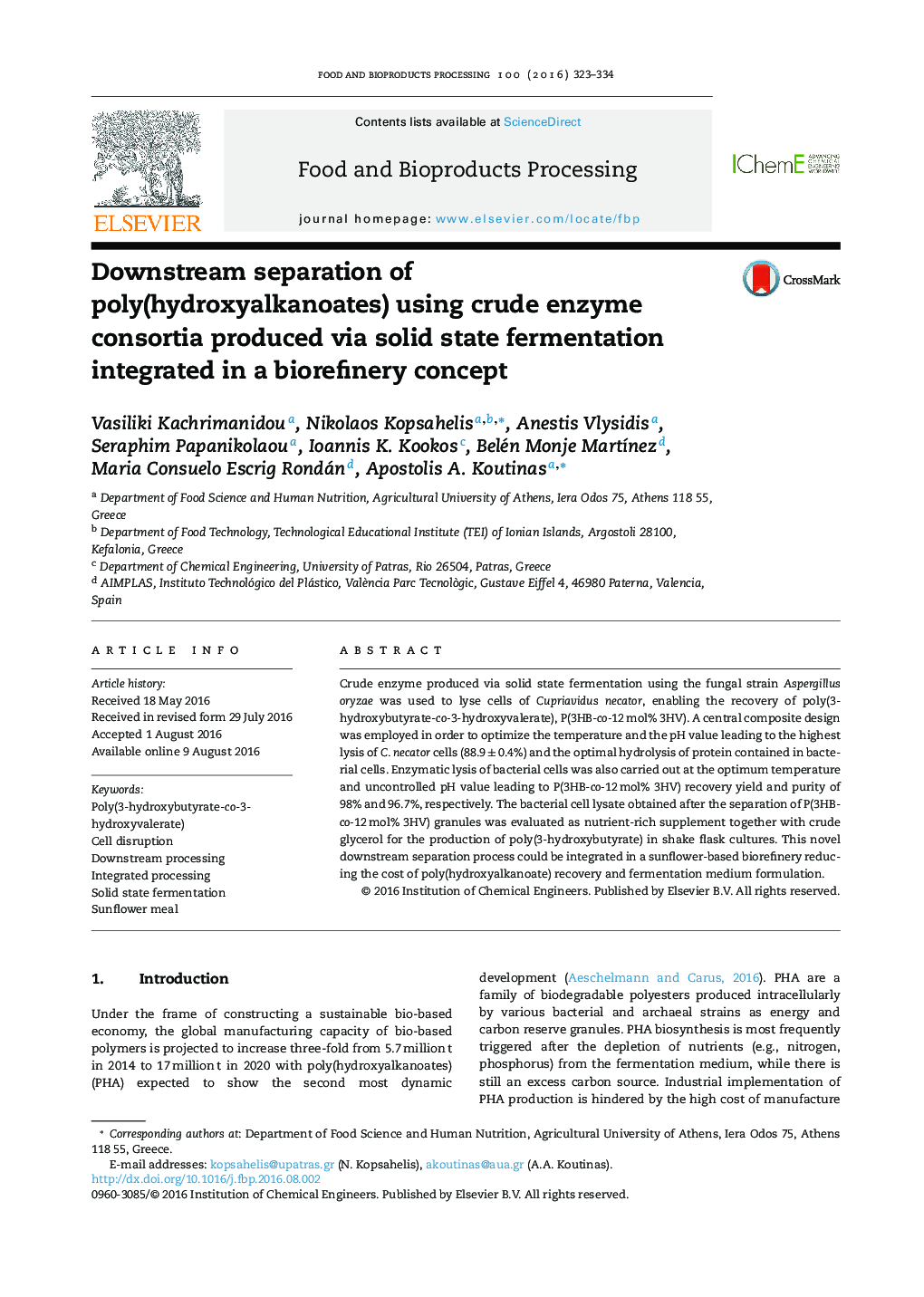| Article ID | Journal | Published Year | Pages | File Type |
|---|---|---|---|---|
| 6451750 | Food and Bioproducts Processing | 2016 | 12 Pages |
â¢Recovery of poly(hydroxyalkanoates) by a novel process using crude enzymes.â¢The temperature and pH of cell lysis were optimized by experimental design.â¢The recovery yield of P(3HB-co-3HV) achieved was higher than 98%.â¢The purity of P(3HB-co-3HV) achieved was higher than 96.7%.
Crude enzyme produced via solid state fermentation using the fungal strain Aspergillus oryzae was used to lyse cells of Cupriavidus necator, enabling the recovery of poly(3-hydroxybutyrate-co-3-hydroxyvalerate), P(3HB-co-12 mol% 3HV). A central composite design was employed in order to optimize the temperature and the pH value leading to the highest lysis of C. necator cells (88.9 ± 0.4%) and the optimal hydrolysis of protein contained in bacterial cells. Enzymatic lysis of bacterial cells was also carried out at the optimum temperature and uncontrolled pH value leading to P(3HB-co-12 mol% 3HV) recovery yield and purity of 98% and 96.7%, respectively. The bacterial cell lysate obtained after the separation of P(3HB-co-12 mol% 3HV) granules was evaluated as nutrient-rich supplement together with crude glycerol for the production of poly(3-hydroxybutyrate) in shake flask cultures. This novel downstream separation process could be integrated in a sunflower-based biorefinery reducing the cost of poly(hydroxyalkanoate) recovery and fermentation medium formulation.
Graphical abstractDownload high-res image (137KB)Download full-size image
